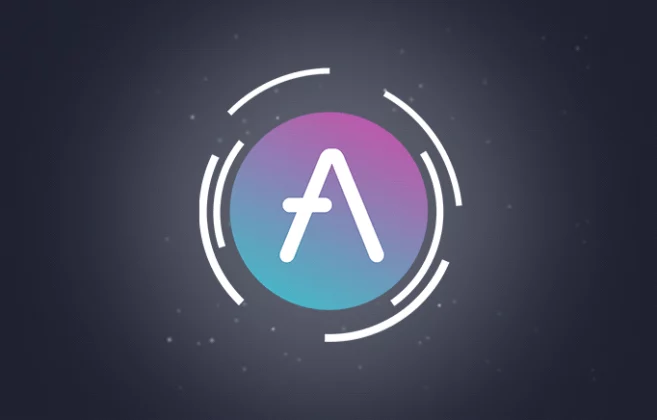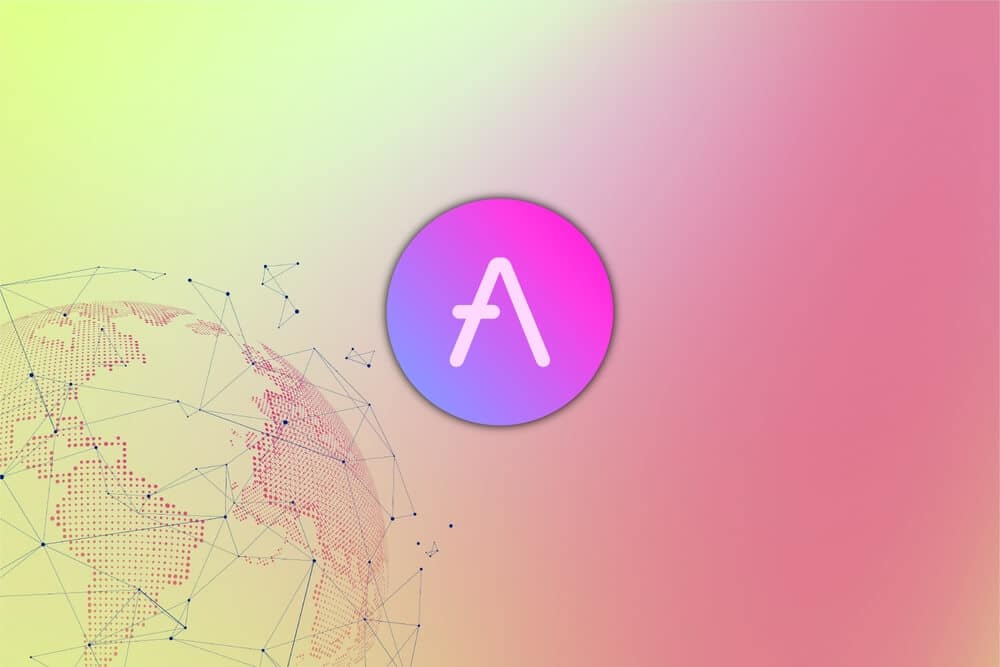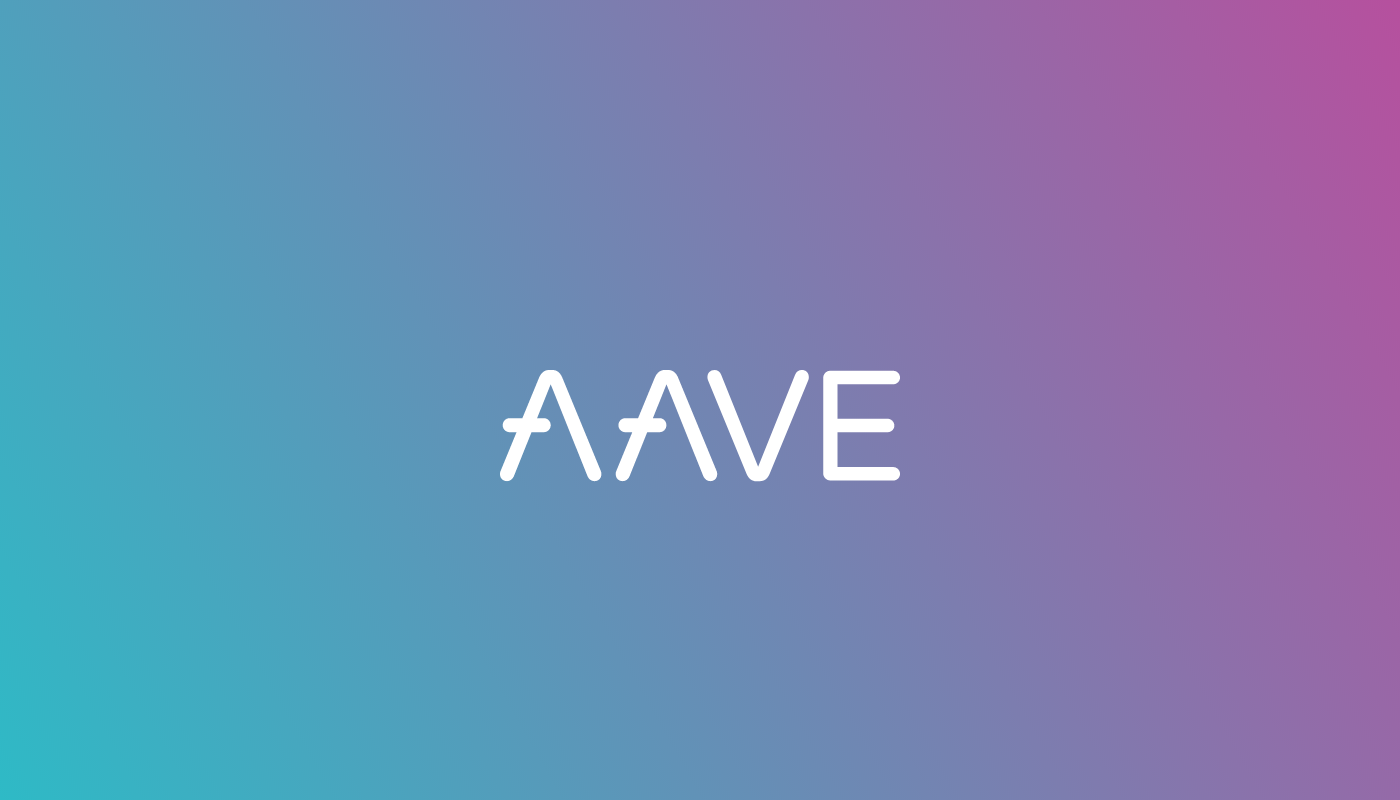What is Aave (AAVE) and How Does It Work?
What is Aave and how does the decentralised lending protocol work? This is the ultimate guide to Aave Protocol.


Decentralised finance (or DeFi, for short) gives many opportunities for people who are otherwise unable to access conventional financial services, such as banking, borrowing, lending, and investing.
Aave is a great example of a DeFi protocol. It is one of the first protocols to make use of Ethereum’s smart contracts to overcome the “trust gap” in the peer-to-peer lending industry.
In May 2021, the Total Locked Value (TLV) in the Aave protocol was around 45 billion USD, as Aave continues to become one of the top DeFi protocols that have survived the test of time.
Curious to know more about Aave? Continue reading to find out how it works, and what the advantages of having AAVE tokens are.
Key takeaways
- Aave is a decentralised platform that uses smart contracts to automate the process of lending cryptocurrencies.
- Users who wish to borrow crypto using Aave will need to make a deposit that is worth more than the amount they wish to borrow; this protects lenders from the risk of losing money due to loan defaults.
- Borrowers of AAVE tokens can enjoy zero transaction fees, while those who borrow using AAVE as collateral can borrow more for less collateral. This benefits both the lenders and borrowers mutually.
What is the AAVE token?
Aave was built on top of the Ethereum blockchain network, and AAVE is the ERC-20 token that is native to the platform. It was released in 2017 as an ICO token, which helped raise 16.2 million US dollars.
All 16 million AAVE tokens that were issued are in full circulation, which is currently valued at $410 per token (as of 24 Aug 2021).

Since Aave is decentralised, the protocol literally has no owner, who would otherwise have the authority over its development.
Instead, the authority is given to a decentralised autonomous organisation (DAO), where AAVE holders can propose improvements to the platform, or to vote on improvement proposals.
We say that AAVE is a governance token. However, you will soon learn that there are many other benefits to the AAVE token, even if you don’t participate in the DAO.
Borrowers of AAVE tokens can enjoy zero transaction fees, while those who borrow using AAVE as collateral can borrow more for less collateral. Continue reading below to know how Aave works in detail.
What is Ethereum? Here’s a beginner’s guide to Ethereum.
How does decentralised lending work?
Decentralised lending works on the principles of traditional lending, but without the need for a third-party mediator.
In a traditional lending system, borrowers can borrow from a bank or other financial institutions against their assets. In other words, borrowers use their assets, such as a car or a house, as collateral.

While borrowers can still benefit from their assets (i.e. use the car to go to work, or live in the house), the borrowers must pay back the loan and interest, or risk losing the assets.
In a decentralised lending system, borrowers usually borrow stablecoins, although in some cases, they could borrow cryptocurrencies.
The collateral for borrowing is always denominated in cryptocurrencies, with ether (ETH) or bitcoin (BTC) being the most common assets to borrow against.
Because the price of cryptocurrencies fluctuate wildly compared with other asset classes, it’s common to deposit collateral whose worth is at least 1.5 times the worth of the borrowed money (stablecoins).

For example, as of August 2021, ETH is priced at $3300. Someone (let’s call him Miguel) wants to borrow $100 worth of USDT (equals to 100 USDT).
He then has to deposit $150 worth of ETH (equals to 0.045 ETH). In order for him to redeem 0.045 ETH, he must return 100 USDT plus accrued interest.
Related: What is DeFi (Decentralized Finance)?
Why is decentralised lending useful?
Decentralised lending is attractive to quickly raise capital without having to go through the usually long process of applying for loans at financial institutions. For example, a startup with very little (real world) assets can simply borrow money against their crypto assets without needing to sell any of them.
Most DeFi lending platforms accept borrowers regardless of their credit score or worthiness. This is because all the transactions are powered by smart contracts, which could automatically seize assets in the event where some borrowers fail to return all their loans.
Another use for decentralised lending is leveraged trading, where traders borrow money to leverage or increase their trading position, to increase their future profit. Let’s return to Miguel’s case.
How lending is used for leveraged trading
Let’s say that Miguel is actually a trader, and he borrowed $100 worth of USDT with $150 worth of ETH for 5 days. With his borrowed $100, he bought $100 worth of ETH. In his portfolio, he’d have $150 of ETH locked as collateral, and $100 of ETH in his wallet.

After 5 days, the price of ETH increased by 50%. The ETH in his wallet is now worth $150, while his locked ETH is now worth $225.
If he decides to sell the ETH in his wallet for 150 USDT, and return 100 USDT to the lender (plus 5 USDT interest), he’d have his $225 of ETH back in his wallet.
His portfolio would now be worth $225 in ETH plus $45 in USDT. If his starting capital was $150 of ETH prior to borrowing, and his net worth is now $270, then that would equate to 80% growth in net worth in 5 days.
How does Aave work as a liquidity market protocol?
Aave was formerly known as ETHLend, which was a marketplace for peer-to-peer lending on Ethereum, created in 2017. On a truly peer-to-peer platform, borrowers and lenders negotiate over the interest rate and other additional conditions, such as the lending time and maximum loan amount.
As ETHLend became popular, the problem of the lack of liquidity became apparent. For example, borrowers who want to borrow more than the maximum loan amount in the market weren’t able to meet their needs.
In 2018, ETHLend was rebranded as Aave, and a new protocol emerged where liquidity pools are used instead of the marketplace system. Technically speaking, Aave is not a peer-to-peer lending platform, but a decentralised liquidity market protocol.
Related: What is Uniswap (UNI)? The DEX Token Explained Simply
How Aave works as a liquidity market
Lenders simply deposit any amount of capital into Aave’s liquidity pools, while borrowers can come in and borrow from the liquidity pool at a predetermined interest rate. Lenders (a.k.a. liquidity providers) earn money from the collective interest of the pool, not from individual borrowers.
This system is sometimes known as peer-to-pool lending. The benefit is that lenders can withdraw their deposit at any time, while borrowers can borrow any amount that is available in the pool.

The interest rate in Aave is dynamic and depends on the supply of capital available for lending. If there is an abundance of capital, the interest rate is set lower to encourage loans; if capital is scarce, the interest rate is increased to encourage loan repayment and to incentivise lenders to deposit more.
However, Aave also features a stable interest rate to provide more predictability for borrowers. Of course, this comes at the borrowers’ cost of incurring higher interest rates than the average of the dynamic rates.
What is the liquidation protocol in Aave?
Even with crypto assets as collateral, lending is still risky. The borrowed capital could become undercollateralised, when the collateral could fail to pay back the lenders.
When this happens, the protocol immediately liquidates the collateral, and the borrower no longer needs to repay the lending pool.

For example, if Miguel borrows $100 of USDT with $150 of ETH collateral, and ETH’s price sinks 33% lower, the ETH collateral would now be worth $100.
For the safety of the lending pool, the protocol liquidates the borrower’s ETH so that the lending pool gets $100 back. Both the lending pool and Miguel would each have $100 worth of assets.
What is a flash loan in Aave?
Aave is one of the only few platforms that offer flash loans. With a flash loan, borrowers can borrow without collateral. The only catch is that they must return the borrowed capital within 10 to 20 seconds.
In blockchain terms, the borrower must borrow and return the capital in a single blockchain transaction. On Ethereum, a transaction takes 10 to 20 seconds to occur.

Flash loans are used by arbitrage traders equipped with special software to make instant trades that profit from market inefficiencies. So, if an asset is priced differently at different places, arbitrageurs can buy the asset in one place and sell in another place where it is valued more.
If an arbitrageur does not make a profit from the one single transaction, she wouldn’t be able to return the borrowed capital, and the transaction “fails”.
Ethereum is designed so that failed transactions can be rolled back. When this happens, the lender could still take back the borrowed capital, and the borrower would only have to pay for gas fees.
The mechanics of flash loan in Aave is quite complex, and it’s worth an article dedicated to it. However, if you’re still curious about how flash loans work under the hood, here is a video that explains it thoroughly.
What is the future outlook of Aave and AAVE tokens?
Aave has successfully become one of the well known lending protocols in the DeFi space. Decentralised liquidity is not only useful for startups to gain capital. It’s also much needed by professional leveraged traders, and arbitrageurs can even benefit from Aave’s innovative flash loans service.
The AAVE token holders can also stake or deposit the tokens in the service of the protocol. This is different from liquidity pool deposits.

In the unlikely event of a major deficit, where even the liquidation protocol fails to pay back lenders, part of the staked AAVE tokens in the protocol can be auctioned in the free market.
In a sense, AAVE acts like insurance for lenders within the protocol, and AAVE stakers are rewarded handsomely with the lending pool’s profit share and other incentives. Staking AAVE will of course reduce the circulating supply of AAVE, and increase its value.
Simply, the more people use Aave as the go-to decentralised peer-to-pool liquidity market, the more valuable AAVE will be.
How to Buy Aave (AAVE) in Australia
With all that said, what are your thoughts on the AAVE token? Are you feeling confident on the Aave token?
As prefaced above, Aave is quickly becoming one of the most prominent lending protocols in the DeFi space. This makes AAVE an ideal candidate for those wanting to diversify their crypto portfolio.

Add AAVE to your portfolio: Buy AAVE with Easy Crypto AU.
AAVE is just one of over 160+ altcoins that we offer at Easy Crypto Australia. Our collection consists of NFT tokens, Metaverse, DeFi, and many more.
Check the latest rates: Use the crypto converter tool to check the latest rates for AAVE.

Pro tip: you can preview the conversion rates for Aave (AAVE) or any other crypto in our collection by going to our complete list of crypto assets.
Checkout our YouTube video guide on how to buy AAVE and other cryptocurrencies on Easy Crypto!
For a more detailed guide: Read our quick guide on how to buy crypto in Australia.
Stay tuned for more crypto coin guides! In the meantime, explore our library of crypto coin fundamentals on our learning hub at Easy Crypto.
Share to
Stay curious and informed
Your info will be handled according to our Privacy Policy.
Make sure to follow our Facebook, Twitter, Instagram, and YouTube channel to stay up-to-date with Easy Crypto!
Also, don’t forget to subscribe to our monthly newsletter to have the latest crypto insights, news, and updates delivered to our inbox.
Disclaimer: Information is current as at the date of publication. This is general information only and is not intended to be advice. Crypto is volatile, carries risk and the value can go up and down. Past performance is not an indicator of future returns. Please do your own research.
Last updated July 18, 2024





